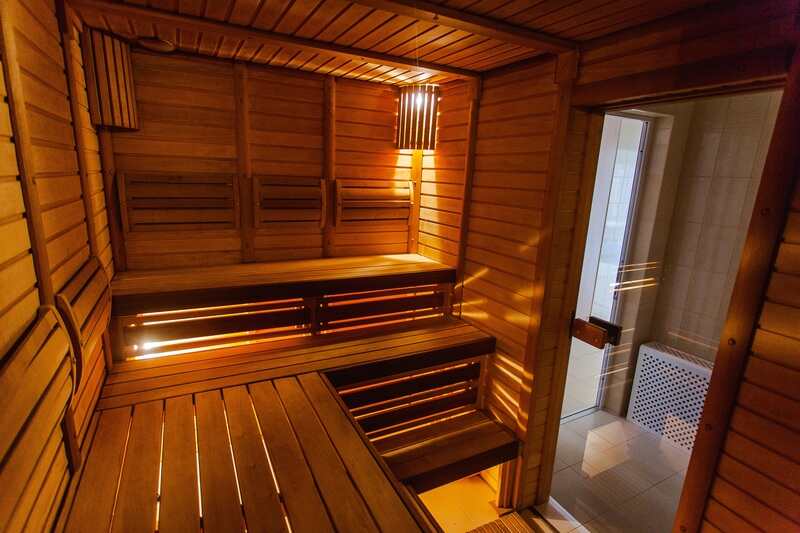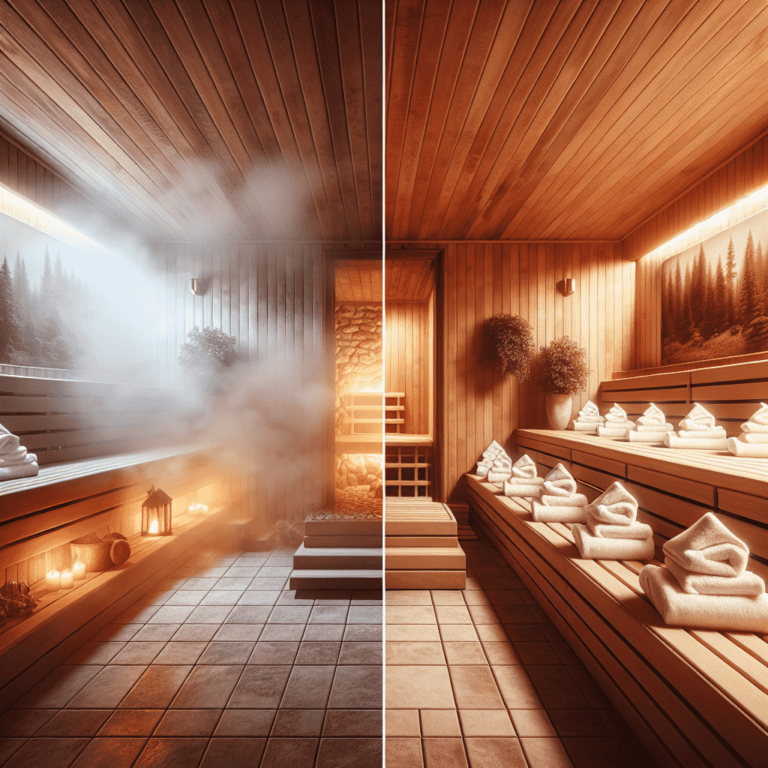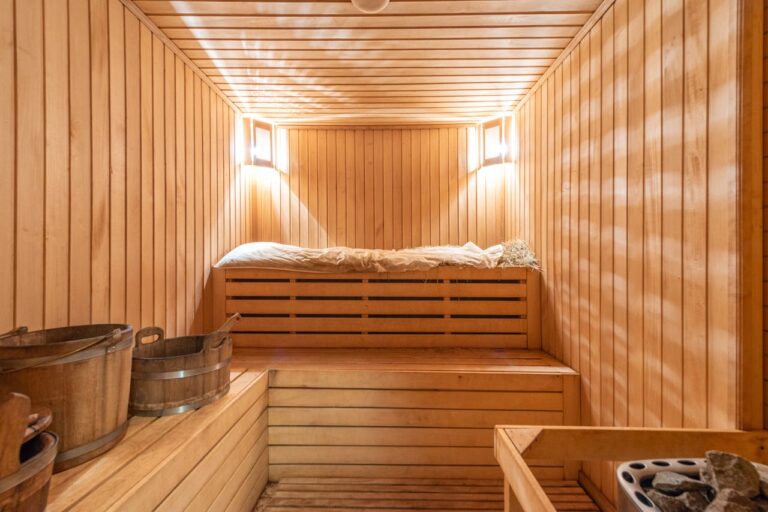Introduction
Saunas have been used for centuries to promote relaxation, detoxification, and overall well-being. As technology advances, we now have two main types of saunas to choose from infrared and traditional. In this article, we’ll explore the differences between Infrared vs Traditional Saunas, and their benefits, and help you decide which one might be best for your needs.
How Does Traditional Sauna Work?
Traditional or Finnish saunas use heated rocks to warm the air inside an enclosed space. These saunas typically operate at temperatures between 150°F and 195°F (65°C to 90°C) with low humidity levels.
How Does an Infrared Sauna Work?
Infrared saunas use infrared heaters to emit radiant heat that is directly absorbed by the body. They operate at lower temperatures, usually between 120°F and 150°F (49°C to 65°C), making them more comfortable for some users.
Temperature Differences: How Hot Should a Sauna Be?
Traditional Sauna Temperatures
Traditional saunas are typically hotter, with temperatures ranging from:
- Warm: 150°F to 165°F (65°C to 74°C)
- Hot: 166°F to 180°F (74°C to 82°C)
- Very hot: 181°F to 195°F (83°C to 90°C)

Infrared Sauna Temperatures
Infrared saunas operate at lower temperatures:
- Low: 120°F to 130°F (49°C to 54°C)
- Medium: 131°F to 140°F (55°C to 60°C)
- High: 141°F to 150°F (61°C to 65°C)

How Long to Stay in a Sauna: Duration Guidelines
Traditional Sauna Sessions
For traditional saunas, it’s recommended to start with shorter sessions and gradually increase:
- Beginners: 5-10 minutes
- Intermediate: 10-15 minutes
- Experienced: 15-20 minutes
Infrared Sauna Sessions
Infrared sauna sessions can typically last longer due to lower temperatures:
- Beginners: 10-15 minutes
- Intermediate: 15-30 minutes
- Experienced: 30-45 minutes
Health Benefits of Saunas
Both types of saunas offer numerous health benefits, including:
- Improved circulation
- Stress relief and relaxation
- Detoxification through sweating
- Muscle recovery and pain relief
- Skin health improvement
Infrared Sauna Benefits
Infrared saunas have some unique advantages:
- Deeper tissue penetration
- Lower temperatures for longer sessions
- Potentially more efficient detoxification
- Easier on the respiratory system
Traditional Sauna Benefits
Traditional saunas also have their own set of benefits:
- Social experience (especially in public saunas)
- Humidity control with water on hot rocks
- Authentic cultural experience
- Potential for aromatherapy with essential oils
Types of Saunas: Indoor and Outdoor Options
Indoor Saunas
Indoor saunas are popular for their convenience and can be installed in various locations:
- Basement
- Spare room
- Bathroom
- Home gym
Outdoor Saunas
Outdoor saunas offer a unique experience and can be great additions to your property:
- Backyard sauna cabins
- Barrel saunas
- Mobile sauna trailers
Energy Efficiency Comparison
Infrared saunas are generally more energy-efficient due to:
- Lower operating temperatures
- Faster heat-up times
- Direct heating of the body rather than the air
Traditional saunas may consume more energy but offer a different experience that some users prefer.
Installation and Maintenance
Infrared Sauna Installation
Infrared saunas are often easier to install:
- Plug-and-play options available
- No need for complex ventilation systems
- Can be placed in various locations within a home
Traditional Sauna Installation
Traditional saunas may require more extensive installation:
- Need for proper insulation and ventilation
- It may require professional installation
- Often require dedicated electrical circuits
Cost Comparison
When considering the cost of saunas, factor in:
- Initial purchase price
- Installation costs
- Energy consumption
- Maintenance expenses
Infrared saunas are often less expensive upfront and in long-term operation.
Customization Options
Both types of saunas offer various customization options:
- Size and capacity
- Wood types and finishes
- Lighting and audio systems
- Seating configurations
Health Considerations and Precautions
While saunas offer many benefits, it’s important to consider:
- Staying hydrated before, during, and after sauna use
- Avoiding alcohol consumption before or during sauna sessions
- Consulting with a healthcare provider if you have any medical conditions
Choosing the Right Sauna for You
Consider these factors when deciding between infrared and traditional saunas:
- Personal temperature preferences
- Available space in your home
- Budget constraints
- Desired health benefits
- Energy efficiency concerns
Conclusion
Both infrared and traditional saunas offer unique experiences and health benefits. By understanding the differences in temperature, session duration, and overall experience, you can choose the type of sauna that best fits your lifestyle and wellness goals. Whether you prefer the intense heat of a traditional sauna or the gentle warmth of an infrared sauna, incorporating regular sauna sessions into your routine can contribute to improved health and well-being.



[…] you step into the sauna for a relaxing sweat session, remember that less is more when it comes to clothing. Avoid heavy […]
[…] 1. Traditional Finnish Saunas […]
[…] in dry infrared saunas, the combination of heat and sweat can introduce moisture to your device. This can result […]
[…] you ever thought about stepping into a sauna and wondering if can sauna burn calories and help you shed those extra pounds? The idea of relaxing in heated bliss while […]
[…] Traditional Finnish Saunas: These use dry heat, typically generated by heating rocks in a wood-burning stove or electric heater. The humidity is low, usually around 10-20%. […]
[…] a full-sized sauna, but in a more convenient and accessible package. These pods have evolved from traditional Finnish saunas, which have been used for centuries to promote health and relaxation. Today’s modern sauna […]
[…] for its potential sauna heart benefits on health. Recent sauna research suggests that regular sauna therapy sauna cardiovascular health, sparking interest among health enthusiasts and medical professionals […]
[…] One of the most popular options for muscle recovery is the traditional Finnish sauna. […]
[…] is easy to understand. It is based on using two different temperatures. First, you spend time in a warm sauna. This helps your body warm up and sweat. The heat helps you relax, improves blood flow, and gets […]